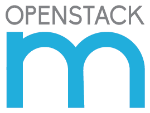 DevStack Mitaka: Documentation
DevStack Mitaka: Documentation
Appliance Details
Documentation:
Please refer to the documentation on how to reserve and provision resources. Use the image Ubuntu-14-04-Devstack.
The instructions below describe how to spin an instance within your own DevStack environment. For documentation on how to use DevStack, see their official site.
Log into Chameleon’s TACC or UC Bare Metal Cloud
In the left pane, navigate to Instances tab and click on ‘Launch Instance’
In the Details Tab, click on Image Name and from the drop down menu select Ubuntu-14-04-Devstack-Mitaka
Associate a floating IP to your created instance by clicking on the ‘Associate Floating IP’ button located on the far right.
You can proceed to test your DevStack deployment by accessing the Horizon dashboard using the floating IP address in your explorer (user: admin or demo, password: secrete) by following the next steps:
Method 1. Using Horizon Dashboard
Type your instance’s floating IP into your preferred explorer.
On the displayed dashboard you can either log in as an admin or as a demo user. Type the admin under user name and secrete as the password.
In the left hand menu, click on Project and under Compute click on Instances. You will now have an empty list of instances.
To launch a new instance click on ‘Launch Instance’
In this new screen you will see different tabs.
Under the Details tab define the following: Instance name: Name of your preference Flavor: Select a flavor depending on your ram, #vcpus and storage needs Instance Count: How many instances of this flavor you want to create Instance Boot Source: Select Boot from image for this example Image Name: By default, the only available image is cirros-0.3.4-x86_64-uec
In the Access & Security tab you will be requested for a Key Pair, since this is your first time in your devstack instance, no key pairs would be available. To add one: Click on the + sign Define a name for your Key Pair Paste only your public key into the Public Key box
If you do not have a key pair, follow the instructions in the description. Your public key can be found on your system’s /home/[your-user]/.ssh folder.
In the Networking tab, drag and drop my-network to the Selected networks box if it is not there by default.
Finally, click on Launch. You will now view your new instance my-instance listed and its status will be declared as Active.
To access your created cirros instance follow the next steps:
Access your Devstack instance via ssh using the associated floating ip with: ssh ubuntu@your-devstack-instance-floating-ip
After boot, source admin credentials with: source ~/devstack/openrc admin admin
View your network namespace with: ip netns
This will provide you with a namespace (NETNS_NAME) you can use to connect to your instance. Proceed to access your instance with:
ip netns exec NETNS_NAME ssh USER@cirros-instance-ip
To exit your cirros instance type exit
You can delete created instance by using the NOVA CLI command: nova delete my-instance.
Method 2. Using the CLI
After associating a floating IP to the deployed instance, open a terminal window in your linux environment and access your instance with: ssh ubuntu@your-devstack-instance-floating-ip
After boot, source admin credentials with: source ~/devstack/openrc admin admin
To create a new instance you will require the ID of the flavor, image name and the ID of the network you will connect it to.
Obtain the flavor list with: nova flavor-list
Obtain the image list with: glance image-list
Obtain the list of networks with: neutron net-list
Create your instance with: nova boot --flavor
Ex: nova boot --flavor 1 --image cirros-0.3.4-x86_64-uec --nic net-id=99ff05e7-e4b1-4bb9-bc30-231e78e5bc69 cirros-instance
You can see a list of your instances with: nova list
To delete an instance use the NOVA CLI command: nova delete